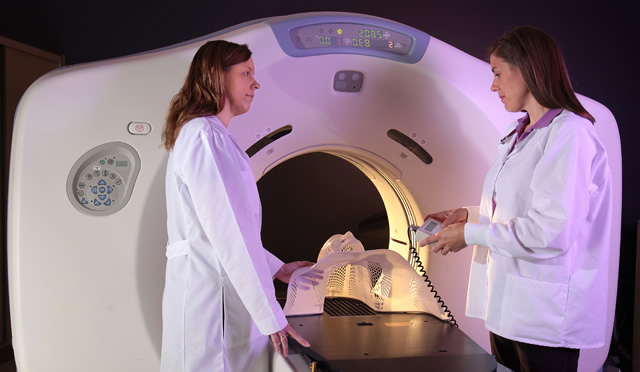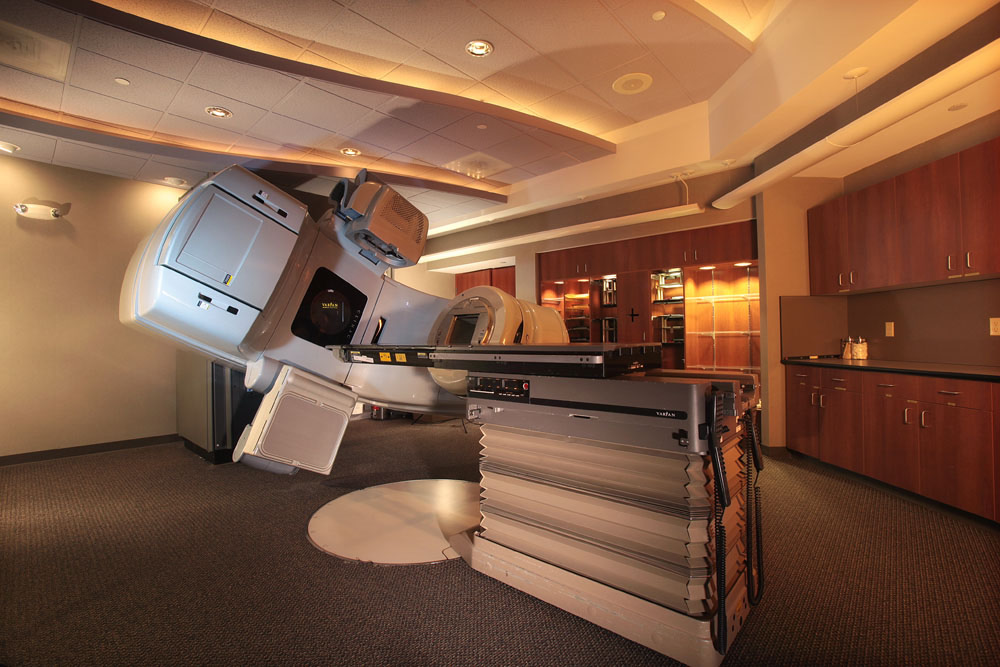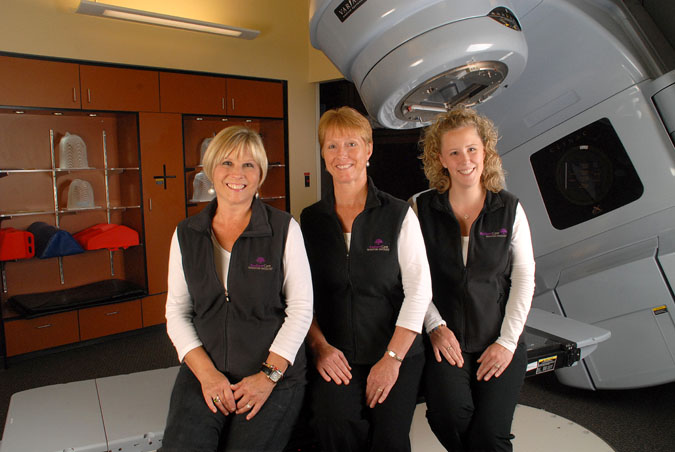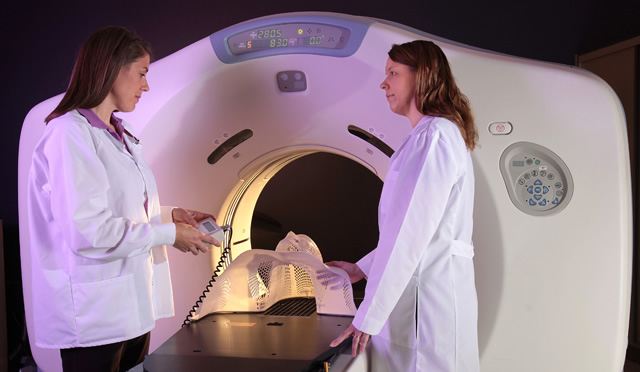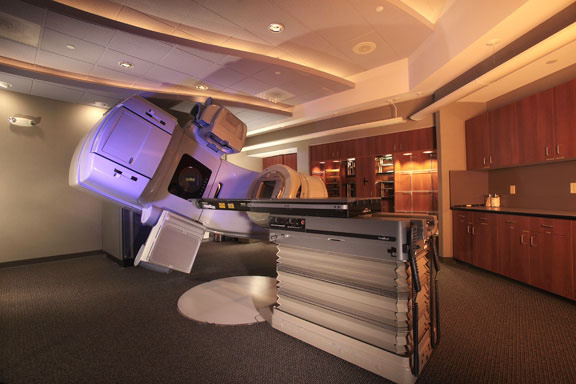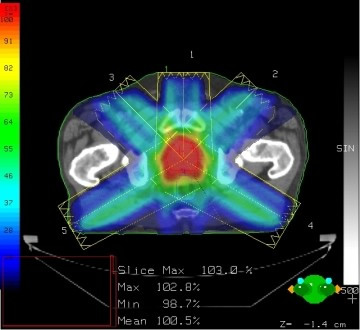IMRT, RapidArc & IGRT
Intensity-Modulated Radiation Therapy (IMRT)
When a target volume is irregular or close to critical structures, IMRT is often used. With IMRT, the radiation beams have regions of relatively high and low radiation doses corresponding to areas that require higher or lower radiation
doses, respectively. For example, IMRT for prostate cancer allows a high dose to be delivered to the prostate while keeping doses to the adjacent rectum and bladder below their tolerance levels. This technique allows higher doses of radiation to be delivered safely than what can be achieved with three-dimensional conformal treatments.
RapidArc
Similar to IMRT, the beams in RapidArc have areas of high or low relative dose. The difference is that in RapidArc, the beam is continuously moving around the patient in a 360 degree arc instead of using a fixed number of overlapping beams. This allows even greater precision of radiation dose delivery in some cases, particularly for treatment volumes that wrap around other volumes that require protection, such as the esophagus or spinal cord.
Image-Guided Radiation Therapy (IGRT)
Delivering a precise radiation treatment requires precise knowledge about the position of the target. Our treatment machines are able to acquire a CT scan prior to treatment for image-guided therapy. If the CT shows that the target volume is not precisely where we expect it to be, adjustments can be made to the patient’s position before treatment. This technique eliminates much of the uncertainty about the daily treatment setup, allowing smaller treatment volumes to be used and ultimately translating into fewer side effects.
